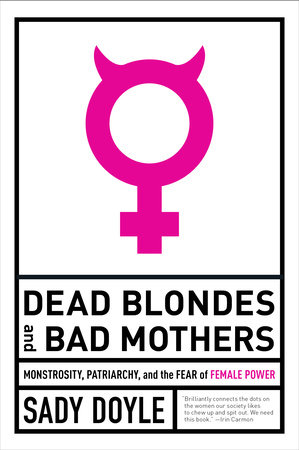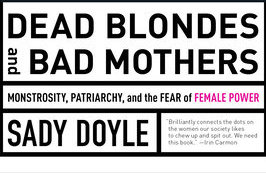 I was a strange kid; I doubled down on that strangeness as junior high started to squeeze my quirks out of me like a tube of toothpaste. I was also stubborn as hell, and particularly sensitive to what my peers delineated as acceptably girl-like and not acceptably girl-like. A fascination with monsters was not acceptable—especially for girls. Liking horror movies was weird. Liking vampires and werewolves (this was the pre-Twilight era) was weird. Witches were deemed okay, but only because they could be acceptably feminine and hide their dangerous nature in beauty. This is why I have a sore spot around the 1996 film The Craft; the girls I hung out with all wanted to be Fairuza Balk in that movie, but my love of werewolves was just too weird. I was fascinated with non-human monsters because they represented all-too-human darkness and things left unsaid.
I was a strange kid; I doubled down on that strangeness as junior high started to squeeze my quirks out of me like a tube of toothpaste. I was also stubborn as hell, and particularly sensitive to what my peers delineated as acceptably girl-like and not acceptably girl-like. A fascination with monsters was not acceptable—especially for girls. Liking horror movies was weird. Liking vampires and werewolves (this was the pre-Twilight era) was weird. Witches were deemed okay, but only because they could be acceptably feminine and hide their dangerous nature in beauty. This is why I have a sore spot around the 1996 film The Craft; the girls I hung out with all wanted to be Fairuza Balk in that movie, but my love of werewolves was just too weird. I was fascinated with non-human monsters because they represented all-too-human darkness and things left unsaid.
As I grew up, and grew more cynical, I kept this fascination to myself. High school and college-age me binged on horror movies, both good and bad—there was a period of time where I watched the b-grade schlock showcased by Mystery Science Theater 3000, over and over again, when I was going through a health crisis in my early 20s. In my personal canon, there was room for the badly acted strangeness of Pod People and David Cronenberg’s superlative, body-horror heavy 1986 remake of The Fly—in some ways, I needed the bad (The Unearthly, The Blood Waters of Dr. Z, and the other horror movies that MST3K eviscerated) to appreciate the good (most of Cronenberg’s catalog).
Writer Sady Doyle’s new book Dead Blondes and Bad Mothers: Monstrosity, Patriarchy, and the Fear of Female Power is a tome that feminist horror aficionados will appreciate; whether your personal definition of horror encompasses true crime, schlocky 1970s horror and sci-fi, gothic fiction, real-life exorcisms, Greek myth, or all of those things, you will find something of interest in Doyle’s wide-ranging and beautifully written survey of the ways in which female power is represented as terrifying, monstrous, and ultimately as something to be feared. Doyle elucidates much of our culture’s myth-making surrounding women and power, and the ways in which this myth-making and storytelling is not neutral when it comes to gender. As she writes in the book’s introduction, “Fear of women may be the single most important truth of misogyny.”
Fear can be a powerful motivator, even if the thing we fear is not real; however, as Doyle writes, fictional monsters can reveal the very real—and horrifying—beliefs that undergird those creations. Doyle also suggests that the darkness that we find—and, in some cases, relate to–in fictional monsters can be a good thing, a way of reclaiming power. I’m not sure what my childhood and adolescent fascination with monsters says about me, other than that fascination cementing my multi-decade horror fandom. Doyle’s careful and keen examination of the tropes of horror and what those stories say about women’s power makes Dead Blondes and Bad Mothers an engaging, fast read–one which I would enthusiastically recommend to other female horror fans. It’s the kind of book that will make you ask yourself: what are you afraid of, and why?

